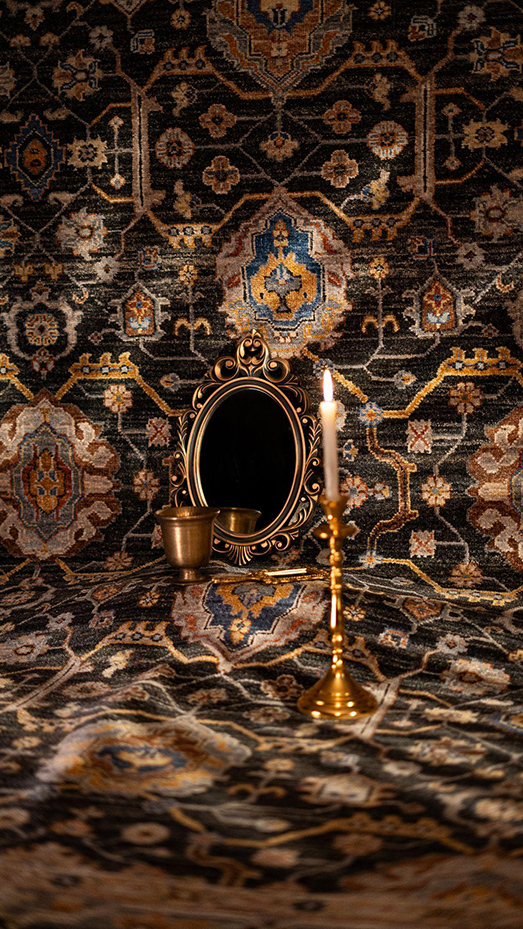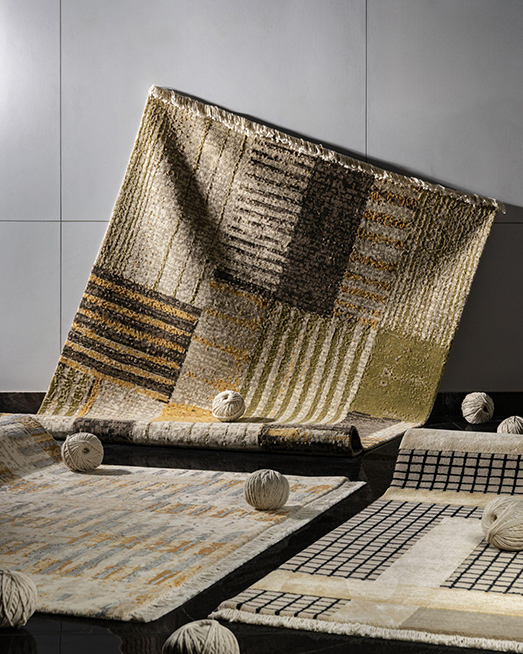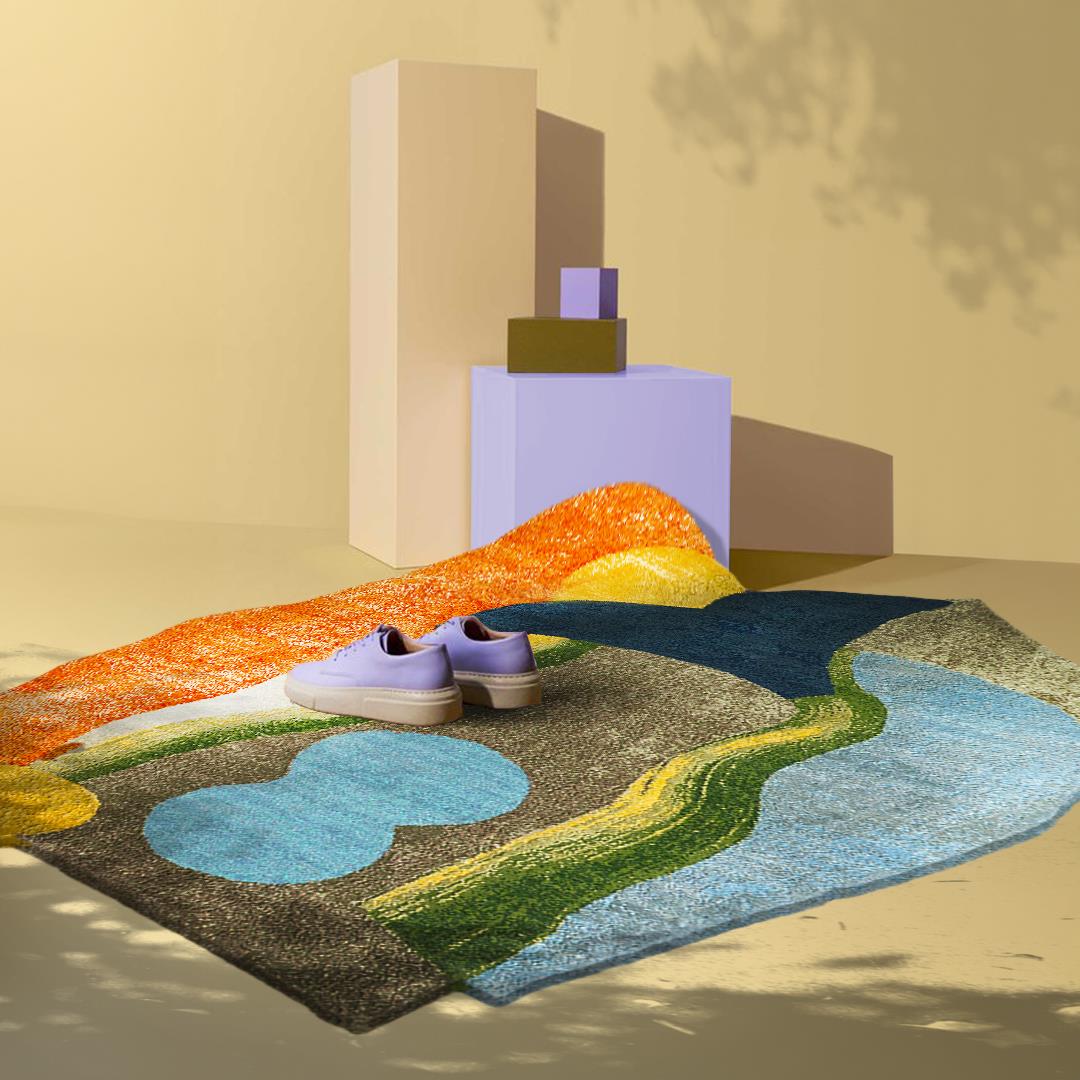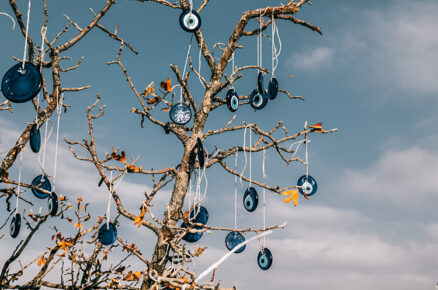Rugs were perhaps invented over 5,000 years ago when nomadic tribes hand-woven rugs out of camel, sheep, and goat hair. Archaeologists have uncovered evidence of rugs in Egyptian and Mesopotamian tombs dating back more than 4,000 years. The oldest known surviving rug is the Pazyryk Carpet, which dates back to 500 BC. Believed to be the world’s oldest example of a knotted-pile carpet and is kept at the State Hermitage Museum in St. Petersburg, Russia, the carpet was made out of new wool around 400 BC. As time passed, rugs became a significant part of households.
Smriti Choudhary, Brand Director of Cocoon Fine Rugs, highlights the journey of rugs from being a functional piece at home to being a pivotal part of home decor.
Interior trends might come and go, but the allure of textures such as wool, silk and cotton remains timeless. However, when it comes to adapting a rug to contemporary interior aesthetics, we’ve tried to give different textures to our rugs to modernise the look. For instance, if you take a look at our oxidised Bombay Collection, we’ve used a complete oxidation process where the entire motif gets broken. Bringing in a distressed look gives a completely different textural feel to the rug. Traditionally, a rug would have a Paisley motif in its entirety; however, our oxidation process ensures an entirely new look.

Even as the world evolves constantly, traditional rug designs have always been a very important part of a home’s design goals and they continue to be a very significant part. Plenty of modern homes still look for traditional rug designs, albeit in modern colours. At Cocoon Fine Rugs, our effort is to retain the heritage of the contemporary design goals, keeping the motives intact, keeping the artwork intact, but modernising colours to fit the modern home requirement.
For example, the Gabbeh collection is a very old concept that originated in Afghanistan, where weavers could weave their own motors and their own imagination. We’ve used the same concept of Gabbeh and just recreated them with modern colours, including tones of beige and brown. While traditionally you’d find bright reds or blues woven into the carpet design, our modern take on these rugs gives them a contemporary shade.
Similarly, in the Afghan collection, the motifs remain as in the age-old Afghani rugs but we give them a different wash wool, making them look slightly distressed. The design language remains the same but the end product looks and feels fresh and different.

Culture plays a very big role in defining some of our design styles. When it comes to rugs, too, we go back into history to take inspiration. Take for instance, our Bauhaus collection. Bauhaus was an international design movement that started long ago to defy the traditional rules of design. And the movement became very popular in regions like France. It was very edgy and part-breaking. At Cocoon Fine Rugs, we drew inspiration from that era and made an entire collection on Bauhaus and paid a tribute to it when Bauhaus completed 100 years. We infused all the colours that were typically used in the Bauhaus period into the collection. It was a complete geometric design sensibility that took place back then. Similarly, we also did an entire collection dedicated to the famous street artist Banksy. It was a complete tribute to Banksy’s artwork.

The journey of rugs from their humble beginnings to becoming integral elements of interior design reflects a rich tapestry of history and innovation. The evolution of rug designs from traditional to modern at Cocoon Fine Rugs exemplifies a harmonious blend of heritage and contemporary aesthetics. By preserving the essence of traditional motifs while embracing modern colour palettes and textures, Cocoon successfully bridges the gap between the old and the new. The conscious choice of materials, weaving techniques, and cultural inspirations further underscores the brand’s commitment to creating rugs that not only enhance the visual appeal of a space but also stand the test of time.






